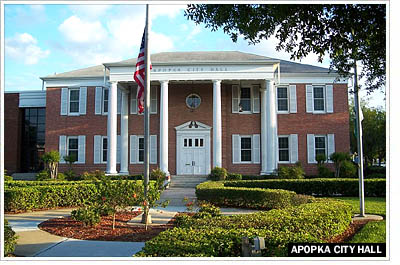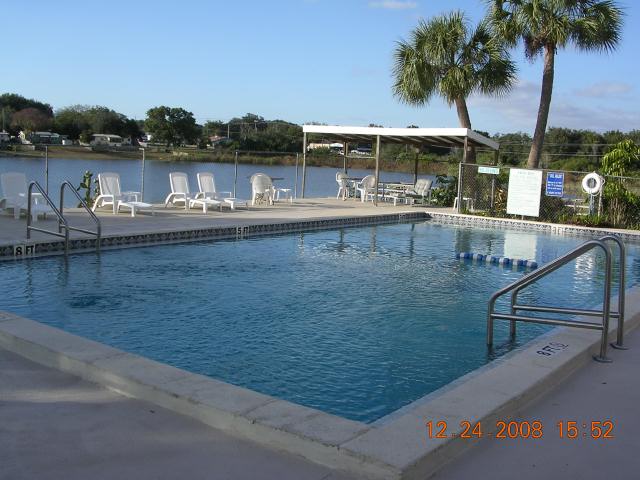Apopka is a city located in Orange County, Florida, United States. The population was 26,969 at the 2000 census. According to the U.S Census estimates of 2006, the city grew to 53,563. It is part of the Orlando–Kissimmee Metropolitan Statistical Area. Apopka is an Indian word for “Potato eating place”. Apopka is often referred to as the "Indoor Foliage Capital of the World."popka is a city located in Orange County, Florida, United States. The population was 26,969 at the 2000 census. According to the U.S Census estimates of 2006, the city grew to 53,563. It is part of the Orlando–Kissimmee Metropolitan Statistical Area. Apopka is an Indian word for “Potato eating place”. Apopka is often referred to as the "Indoor Foliage Capital of the World." Apopka has won the little league world series and has many older swimming pools.
Geography
Apopka is located at 28°40′34″N 81°30′38″W.[5]
According to the United States Census Bureau, the city has a total area of 64.6 km2 (24.9 sq mi). 62.3 km2 (24.1 sq mi) of it is land and 2.3 km2 (0.89 sq mi) of it (3.57%) is water.
Demographics
As of the census of 2000, there were 26,642 people, 9,562 households, and 7,171 families residing in the city. The population density was 1,108.1 inhabitants per square mile (427.9/km²). There were 10,091 housing units at an average density of 419.7 per square mile (162.1/km²). The racial makeup of the city was 73.85% White, 15.56% African American, 0.42% Native American, 1.89% Asian, 0.09% Pacific Islander, 5.36% from other races, and 2.83% from two or more races. Hispanic or latino of any race were 18.08% of the population.
There were 9,562 households out of which 38.2% had children under the age of 18 living with them, 55.8% were married couples living together, 14.4% had a female householder with no husband present, and 25.0% were non-families. 18.6% of all households were made up of individuals and 5.8% had someone living alone who was 65 years of age or older. The average household size was 2.76 and the average family size was 3.13.
In the city the population was spread out with 28.2% under the age of 18, 8.6% from 18 to 24, 33.6% from 25 to 44, 19.5% from 45 to 64, and 10.1% who were 65 years of age or older. The median age was 33 years. For every 100 females there were 94.0 males. For every 100 females age 18 and over, there were 90.1 males.
The median income for a household in the city was $43,651, and the median income for a family was $49,380. Males had a median income of $32,177 versus $26,553 for females. The per capita income for the city was $19,189. About 7.1% of families and 9.5% of the population were below the poverty line, including 12.6% of those under age 18 and 9.7% of those age 65 or over.
In 2010 Apopka had a population of 41,542. The racial and ethnic composition of the population was 49.5% White, 20.7% African American, 0.3% Native American, 3.2% Asian, 0.1% Pacific Islander, 0.4% non-Hispanic reporting some other race, 3.3% reprting two or more races and 25.4% Hispanic or Latino.
History
The earliest known inhabitants of the Apopka area were the Acuera people, members of the Timucua confederation. They had disappeared by 1730, probably decimated by diseases brought to Florida by Spanish colonists.
The Acuera were succeeded by refugees from Alabama and Georgia, who formed the new Seminole Indian Tribe. They called the area "Ahapopka," which means "potato eating place." By the 1830s, this settlement numbered about 200, and was the birthplace of the chief Coacoochee (known in English as "Wild Cat").
At the conclusion of the Second Seminole War, the U.S. Congress passed the Armed Occupation Act of 1842, forcing surviving natives at Ahapopka to abandon their village and seek refuge deeper in the wilderness of the Florida peninsula.
The early American settlers built a major trading center on the foundations of the earlier Indian settlement. Their population was large enough by 1857 to support the establishment of a Masonic lodge. In 1859 the lodge erected a permanent meeting place at what is now the intersection of Main Street (U.S. Highway 441) and Alabama Avenue.
The settlers in the vicinity of "The Lodge" were largely isolated during the American Civil War, but the area rebounded once peace was re-established, and a population boom followed the construction of railroad lines through the region.
In 1882 the one square mile surrounding "The Lodge" was officially incorporated under the name "Apopka."
In 1905, the Apopka City Council authorized incorporation of the Apopka Water, Light, and Ice Company. Councilman A.M. Starbird was appointed its manager, but it was not until voters approved a $9,000 bond in 1914 that he was able to contract with International Harvester Corporation to construct a power plant, so electricity was not available in the city until February 10, 1915. This independent utility company was one of many that were gobbled up by the Florida Public Service Corporation in the 1920s. They continued to manage the city's utility needs until the 1940s, when they sold off its ice plants to the Atlantic Company, its electric service to Florida Power Corporation, and its water services to Florida Utilities.
Present-day Apopka
Apopka's mayor, John Land, has served for over 55 years (with a short three-year gap) and is one of the longest serving mayors still in office in Florida.
Apopka is a fast-growing city and is expanding in all directions. Most notable are the new Lowes and Home Depot DIY stores to the north of the city on US 441 in the location of the previous Dunn Citrus grove (the stretch of 441 which runs through the city is named after Fred N. Dunn). Other businesses on the former Dunn Citrus site include Staples office supply and a second Chili's restaurant.
The John Land Apopka Expressway (Toll 414) opened on 15 May 2009 relieving some of US 441's traffic, taking the route from what is now the US 441 junction with SR 429, and then passing south of the city to rejoin US 441 at its junction with Maitland Boulevard South of the city.
Earthmoving began in the Summer of 2010 to further expand the Expressway including an extension of Toll 414, known as Wekiva parkway, planned to continue just West of the Toll 414 / Toll 429 junction and then North creating a junction at US 441 and Plymouth Sorrento Road. Master plans take the Wekiva Parkway extension further North and then East connecting to I4 at Sanford. Its unclear when such an expansion might be completed.
© Aqua Pool Dealer.com All Rights Reserved 2011
10151 University Blvd. Suite 171, Orlando, FL 32817
Orlando (407) 574-5519 Fort Lauderdale (954) 282-9821
State License CPC1458004
Other Orange County Area's Served
Avalon Park | Apopka | Bay Lake | Belle Isle | Christmas | Conway | Doctor Phillips | Goldenrod | Hunter's Creek | Isleworth | Lake Butler | Lake Buena Vista | Lake Nona | Maitland | Oakland | Ocoee | Orlando | Tangerine | Windermere | Winter Garden | Winter Park | Zellwood
Pool Service 32703 | Pool Service 32704 | Pool Service 32712 | Pool Service Avalon Park | Pool Service Apopka | Pool Service Bay Lake | Pool Service Belle Isle | Pond & Waterfall Service Christmas | Pool Service Conway | Pool Service Doctor Phillips | Pool Service Goldenrod |
Pool Service Hunters Creek | Pool Service Isleworth | Pool Service Lake Butler | Pool Service Lake Buena Vista | Pool Service Lake Nona |
Pool Service Maitland | Pool Service Oakland | Pool Service Ocoee | Pool Service Orlando | Pool Service Tangerine | Pool Service Windermere | Pool Service Winter Garden | Pool Service Winter Park | Pool Service Zellwood
would you like to have us handle your Swimming Pool Service, Pool Repair, Renovation, Diamond Brite, or New Pool Construction? if so



